***Updated to 2025 from our previous 2024 content***
Living in Hawaii is more than just a dream – it’s a reality for over 1.4 million people who call these islands home. But what does living in Hawaii really cost in 2025? As someone who helps thousands understand Hawaii life through this website, I’ll give you the unfiltered truth about making paradise your home. The good, the challenges, everything you need to know.
Why Living in Hawaii is Different
Living in Hawaii isn’t just about beautiful beaches and perfect weather – it’s a complete lifestyle change that affects everything from your daily routine to your monthly budget. Unlike mainland living, Hawaii life means adjusting to island time, embracing outdoor living, and dealing with unique challenges like higher costs for basics and limited shopping options. Don’t underestimate these facts. You many not be affected by all, but you’ll definitely be affected by some. I was, and it took me by surprise. Almost 2 years into my move to Hawaii, I can say I’m adjusted. Here are some things to consider, hopefully it helps.
The isolation of living in Hawaii creates both benefits and challenges. While you enjoy year-round summer and some of the world’s best beaches, you’ll also face higher prices for everything from groceries to gas. The key to successful Hawaii living is understanding these tradeoffs before making the move. You’ll naturally adjust your lifestyle because that’s how things flow. But, it may be a process.
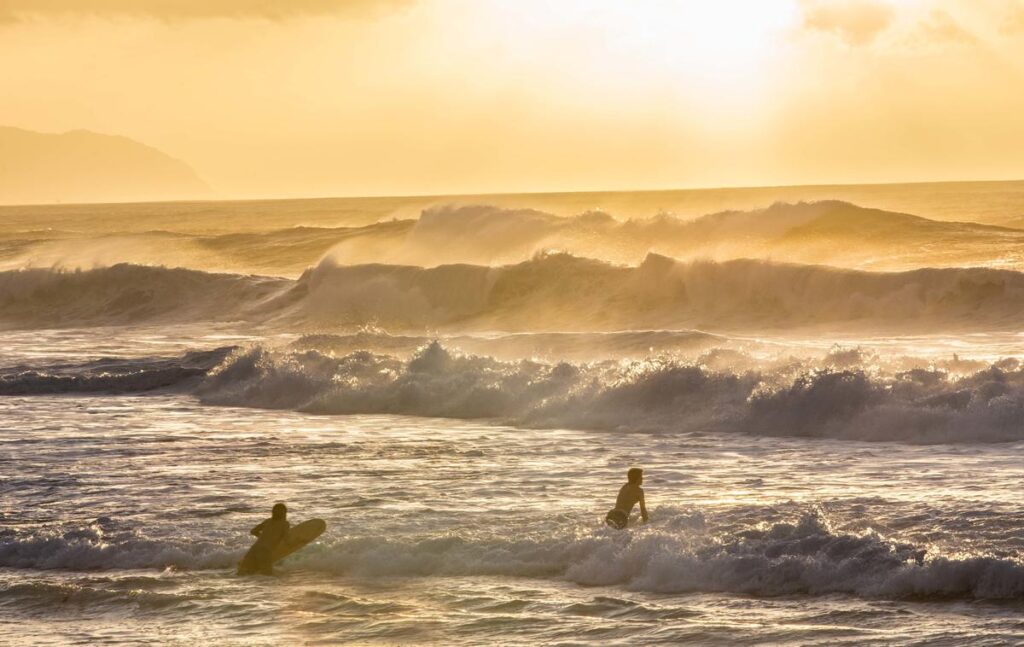
The Real Cost of Living in Hawaii
For a comfortable life in Hawaii, single people typically need to earn between $70,000 and $100,000 per year. Families living in Hawaii usually require between $120,000 and $200,000 to maintain a similar standard of living. These numbers might seem high, but they reflect the unique costs of island life.
Monthly Expense Breakdown
Housing & Utilities:
- A one-bedroom apartment typically runs $1,600-3,000 per month.
- Electric bills range $160-400 depending on AC use.
- Water averages $50-70 monthly.
- Internet costs $60-80 monthly.
- Phone service runs $50-90 monthly.
Food & Groceries:
- Milk (gallon): $7.64.
- Bread: $6.16.
- Eggs (dozen): $4.99.
- A family of four spends $1,000-1,500 monthly on groceries.
- Restaurant meals for two range from $40 at local spots to $150+ at nicer restaurants.
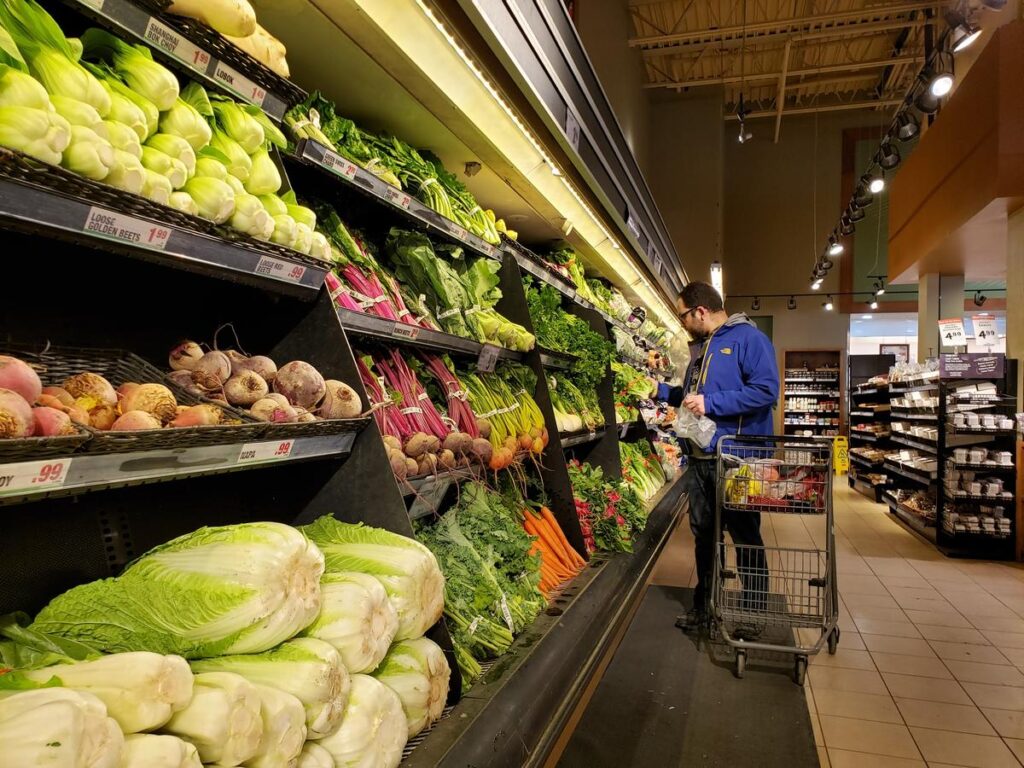
Transportation:
- Gas averages $4.66 per gallon.
- Car insurance costs $150-200 monthly.
- Bus passes run $70 monthly.
- Vehicle registration costs $45-160 annually.
Housing Realities in Hawaii
The median home price in 2025 is around $1.5 million on Oahu, Maui, and Kauai. The Big Island offers relatively more affordable options with a median price of $950,000, with the Hilo area being the most affordable region in the state for home buyers.
Finding Rentals:
- Facebook marketplace and local Facebook groups often list rentals before they hit major websites – successful renters check these sources multiple times daily.
- The best deals often come through word-of-mouth – locals know to tell everyone they’re looking because many landlords prefer renting to someone through personal connections.
- Military housing can be an option even for civilians if occupancy is low – some bases open certain housing areas to DOD civilians or contractors.

Location Considerations:
- Living in Kalihi or Palolo Valley might mean older homes but significantly lower rent – locals know these areas offer good value despite their mixed reputations.
- Pearl City and Aiea provide a sweet spot of reasonable prices and convenient location – many residents find the extra 15-minute commute worth the housing savings.
- Consideration of flood zones becomes crucial – experienced residents check flood maps and talk to neighbors about water issues before signing a lease.
Real-World Money Saving in Hawaii
Grocery Shopping:
- Locals know the sale rotation schedules at different stores – Times Supermarket might have cheaper meat this week, while Foodland has better produce deals next week.
- The Marukai or Don Quijote membership pays for itself quickly if you stock up on Asian foods and household supplies – locals combine sale prices with member discounts for the best deals.
- Chinatown markets become your go-to for fresh vegetables and fruits – prices can be 50% lower than regular supermarkets, especially if you shop late in the day.
- Farmer’s markets aren’t always cheaper, but knowing which vendors offer “end of market” discounts can score you great deals on local produce.
Utilities Management:
- Your electric bill can vary by hundreds depending on AC use – experienced residents often use AC only in bedrooms at night and rely on trade winds during the day.
- Solar water heaters pay for themselves quickly – locals know the initial investment saves significant money over time given Hawaii’s high electricity rates.
- Strategic fan placement becomes an art form – positioning fans to maximize trade winds can keep your home comfortable without running the AC.
- Time-of-use electricity rates mean running your washing machine at night can save money – locals often schedule energy-intensive tasks for off-peak hours.
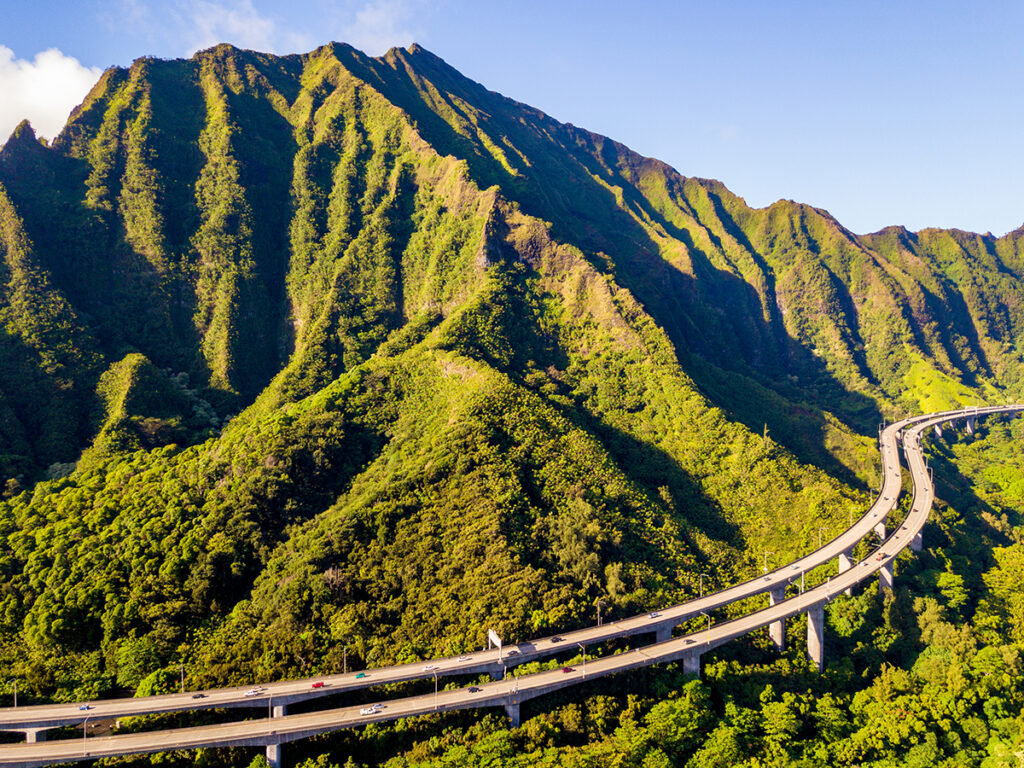
Transportation Savings:
- Gas prices vary significantly between stations – Costco gas usually runs 40-50 cents cheaper per gallon, and locals plan their fill-ups around Costco runs.
- TheBus monthly pass pays for itself in just a few round trips – many residents combine bus commutes with occasional car rentals for big shopping trips.
- Car maintenance costs less if you know where to go – locals often skip the dealerships for trusted independent mechanics who understand island-specific vehicle issues. My go-to is a friend over near Hawaii Kai who has all the diagnostics the dealerships have, twice the skill and it’s affordable.
Island-Specific Living
Oahu:
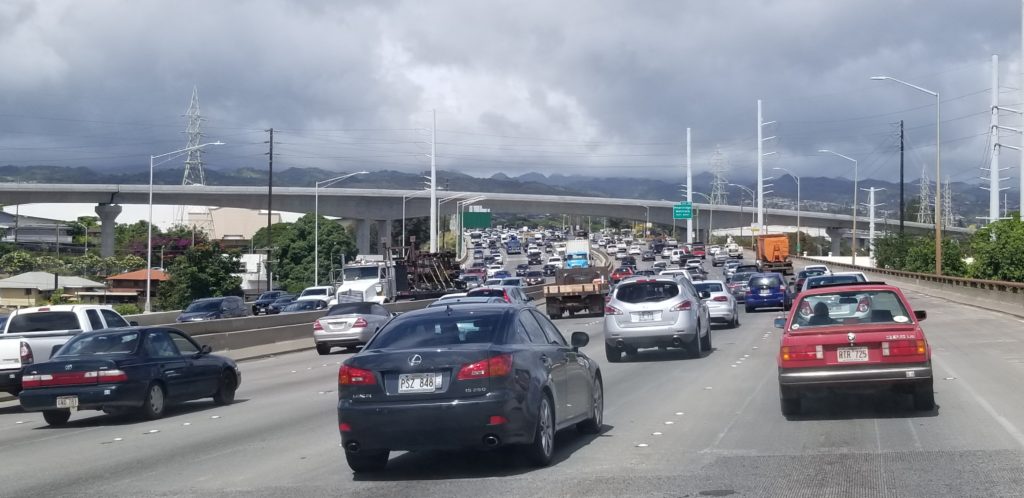
Ugh! Honolulu traffic. by 44728494@N06 is licensed under CC BY-NC-ND 2.0. Image may have been resized or cropped from original.
- The morning commute from the west side to Honolulu can take up to two hours, so locals know to either leave at 5 AM or wait until after 8:30 AM to avoid the worst traffic. That said, island traffic isn’t anywhere near that So Cal traffic I grew to despise.
- Living in town (Honolulu, but locals call it “Town”) means trading square footage for convenience – your rent might get you a place half the size of a mainland apartment, but you can walk to beaches, restaurants, and shops.
Maui:
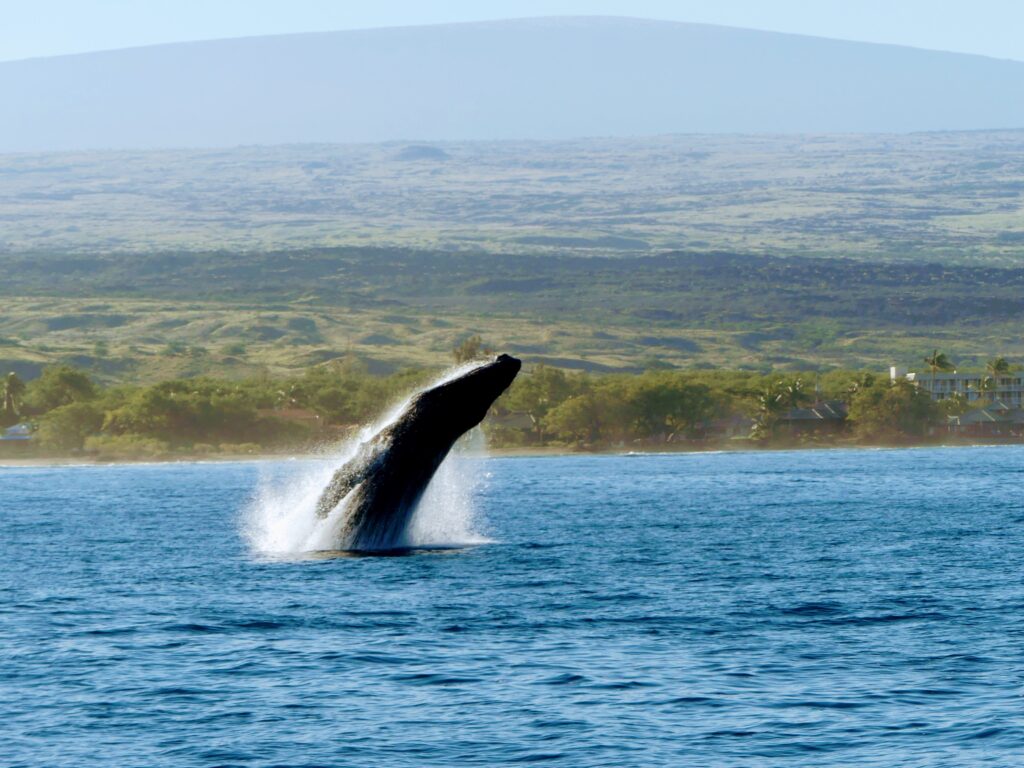
Image Copyright (C) 2023 Paul Siddoway. All rights reserved. Used with permission.
- The phrase “Maui time” takes “island time” to another level – even simple repairs or services might take weeks to schedule because of limited providers on island.
- Road to Hana becomes more than a tourist attraction – you’ll find yourself making the drive for special occasions or when you need a peaceful weekend away from the busier parts of the island.
Big Island:
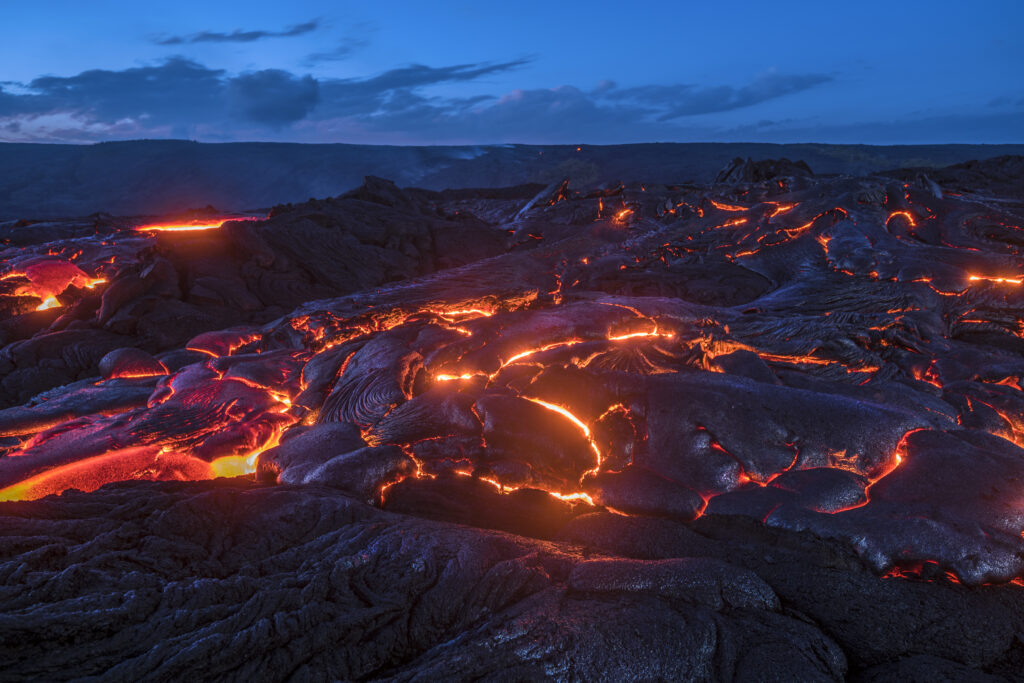
Surface flow lava oozes out of the nooks and crannies dried lava during an eruption from Kilauea volcano.
- Vog (volcanic fog) becomes part of your weather vocabulary, and you’ll check vog conditions like mainlanders check pollen counts, especially if you have breathing sensitivities.
- The price difference between Hilo and Kona sides is dramatic – the same house might cost twice as much on the sunny Kona side compared to the rainy Hilo side.
Kauai:
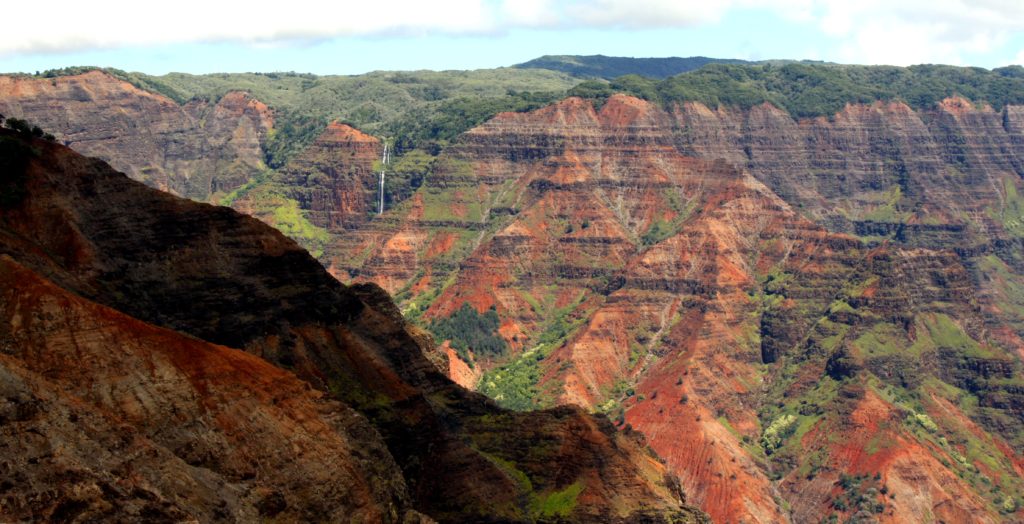
Waimea Canyon, Kauai Island, Hawai’i by 34128007@N04 is licensed under CC BY 2.0. Image may have been resized or cropped from original.
- The term “Kauai freeze” becomes real – many residents find themselves naturally slowing down to match the island’s ultra-relaxed pace within months of moving here.
- The north shore’s winter rains become part of your planning – locals know to stock up on supplies because roads can occasionally close due to flooding.
Understanding Hawaii’s Seasons
Weather Patterns:
- The morning rainbow becomes your weather forecast – locals know that a rainbow over the mountains often means afternoon showers in those areas.
- Winter means checking surf reports daily – even if you don’t surf, high surf affects beach access and creates different driving patterns as people chase waves.
- Vog tracking becomes second nature on the Big Island – residents know which wind patterns bring volcanic haze and plan outdoor activities accordingly.
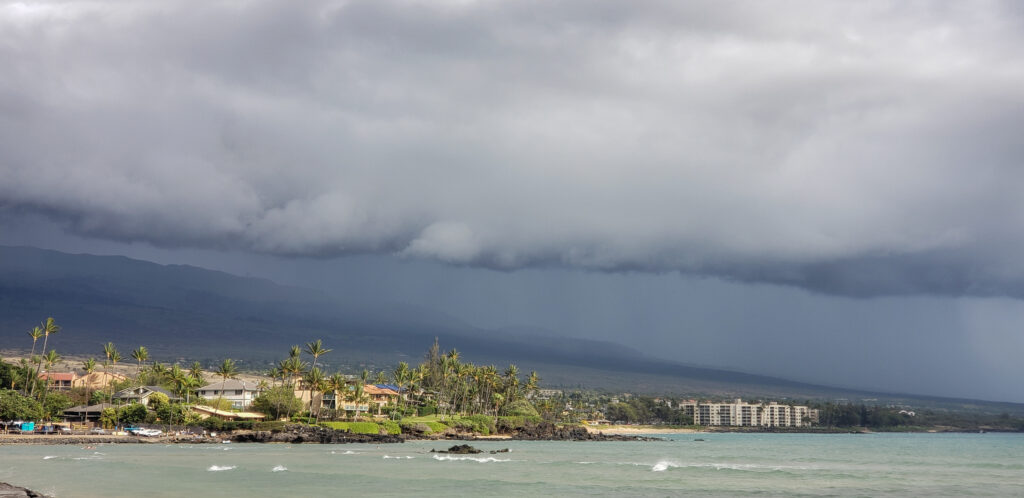
Image Copyright 2022 James Buehler. All rights reserved. Used with permission.
Local Season Rhythms:
- Mango season means keeping track of neighborhood trees – experienced residents know which neighbors are happy to share their excess fruit. There’s usually a way to work it out. Once you have a few backyard mangos, the store bought mangos won’t be acceptable.
- Hurricane season affects shopping patterns – locals stock up on non-perishables and water in May or June, not when a storm is approaching.
- Whale watching becomes a casual daily activity from December to May – residents know which beaches and lookouts offer the best views during morning commutes.
Social Life & Community Integration
Building Connections:
- Church groups and paddling clubs often become your first real community – locals know these organizations welcome newcomers and provide instant social connections.
- Neighborhood potlucks happen regularly, and bringing the right dish matters – experienced residents know to ask what to bring rather than just showing up with anything.
- Kids’ sports leagues become social networks for entire families – many parents find their closest friends through their children’s soccer or swimming teams.
- “Talk story” time after any group activity is as important as the activity itself – newcomers learn quickly not to rush off after formal events end. Hang out and talk. It’s THE best way to build connections.
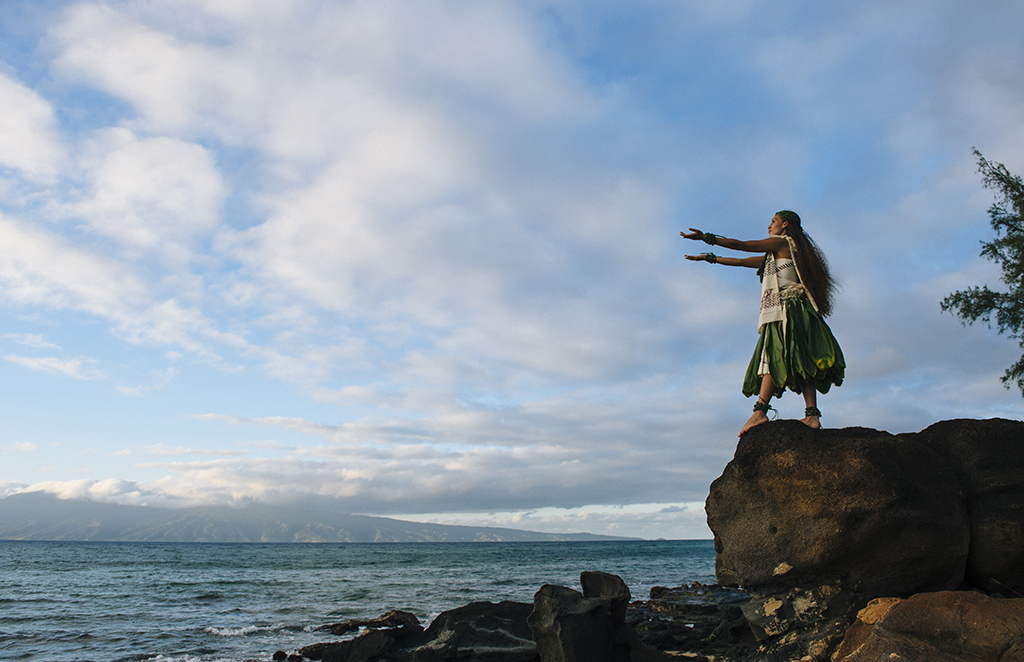
Local Traditions & Cultural Know-How
Everyday Customs:
- Removing shoes becomes automatic – locals often have a dedicated outside shelf for shoes and know to pack slippers for visiting other homes.
- “Auntie” and “Uncle” become part of your daily vocabulary – using these terms of respect for elders shows cultural awareness and builds community connections.
- The word “pau” (finished) naturally enters your vocabulary – you’ll find yourself saying “pau hana” (finished work) instead of “end of day”.
- Lei-giving has specific etiquette – experienced residents know never to refuse a lei and to avoid taking it off in front of the person who gave it to you.
Special Occasions:
- First birthday luaus are major events – locals start planning these celebrations months in advance and often invite the entire extended community.
- Baby luaus often happen at beach parks – experienced families know which parks have the best pavilions and how early to arrive to secure space.
- Graduation celebrations mean giving lei – residents know where to order or make lei ahead of time because last-minute options are limited.
Managing Mainland Connections
Visitor Management:
- Setting up a visitor calendar becomes essential – experienced residents learn to space out mainland visitors to avoid hosting fatigue.
- Having a standard “tourist day” itinerary saves sanity – locals develop a go-to plan that satisfies visitors while fitting into their own schedule. You WILL be affected by this one. I’ve had consecutive weeks with different friends and family on island. You learn to balance it all out. Send them on day trips on their own, depending on your schedule take them to a few local type places.
- Preparing guests for Hawaii realities prevents issues – experienced hosts learn to warn visitors about everything from gecko sounds to humidity. Oh, don’t forget the huge roaches. That is usually the one that stops my mainland friends in their tracks.
Long-Distance Relationships:
- Time zone differences require planning – residents learn to schedule mainland calls during morning beach walks or evening lanai time. The fact that Hawaii doesn’t adjust the clocks for day light savings also brings up issues. Your calendared times will change every 6 months. That 7:00 am meeting will go to 6:00 am.
- Shipping mainland holiday gifts needs extra lead time – experienced residents start holiday shopping in September to ensure timely arrival.
- Social media becomes a crucial connection tool – many locals maintain private Instagram accounts just for keeping mainland family updated.
- Facetime or Zoom becomes a go to tool for staying in touch as well. You can maintain the important face to face discussions.
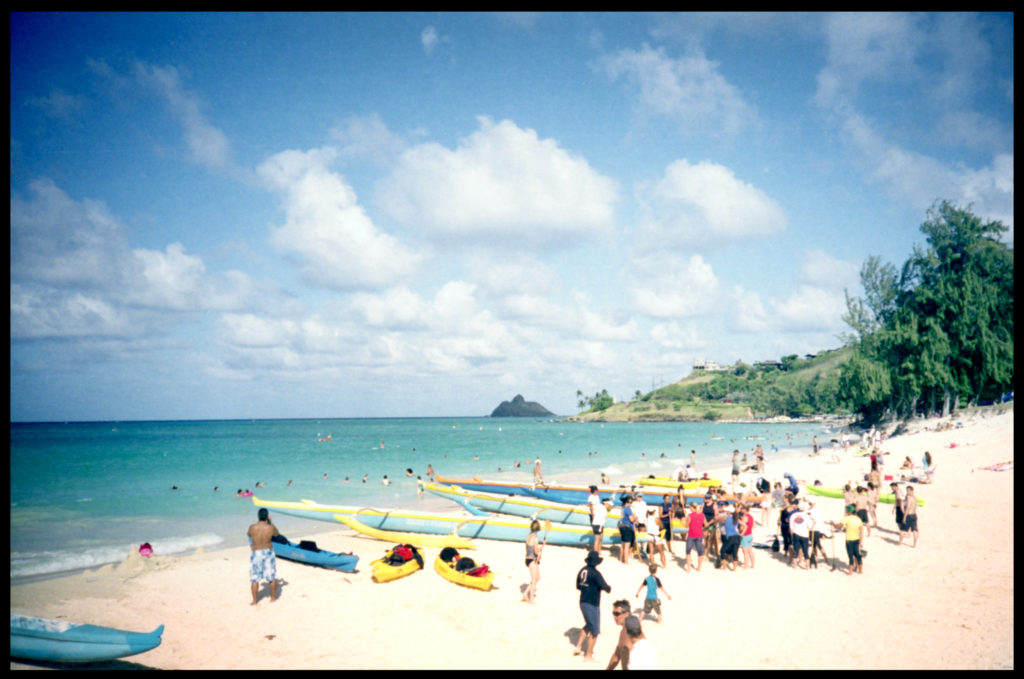
Heihei Wa’a Aloha by Justin De La Ornellas is licensed under CC BY-NC 2.0. Image may have been resized or cropped from original.
The Transition Period
First Three Months:
- Island fever rarely hits immediately – newcomers often spend the first few months in “vacation mode” before reality sets in.
- Finding your local grocery store groove takes time – new residents learn which stores carry their mainland favorites and where to find local alternatives. Be ready for 3-4 go to stores for different reasons.
- The humidity adjustment is real – most newcomers find their hair and skin need different products than what worked on the mainland. Eventually you may not even care. Let your hair do it thing.
Six Month Mark:
- Local friendships start forming naturally – residents find their regular spots and begin recognizing familiar faces at the beach or coffee shop.
- The sign wave becomes automatic (or throw a shaka) – new drivers naturally adopt the local custom of waving to thank other drivers for giving way.
- Understanding micro-climates improves daily planning – residents learn to check multiple weather apps because conditions vary drastically by neighborhood.
One Year Milestone:
- Mainland comparison comments fade away – successful transplants stop saying “back home” and embrace local ways of doing things.
- Holiday traditions adapt to island life – residents create new traditions like Christmas beach picnics instead of trying to replicate mainland celebrations.
- Local food becomes comfort food – new residents find themselves craving plate lunches and poke instead of mainland favorites. Coming from Southern California, My go to was a carne asada burrito or rolled tacos. Now, it’s poke. I love poke!
- You’ll feel like you belong, and I found that people quit assuming I was a tourist. I think it’s a combination of my vibe, definitely my tan and maybe my ABC Store board shorts. Not exactly sure. But the conversations have changed for me in public.
Making It Work Long-Term
Financial Adaptation:
- Creating multiple income streams becomes normal – successful residents often combine traditional jobs with side gigs that fit island life
- Shopping habits permanently change – long-term residents develop systems for combining Costco runs, farmers markets, and local store sales. Costco for meat and veggies. Plus personal care types of products. Then your other stores for Poke and incidentals.
- Investment priorities shift – many residents focus on securing housing first, knowing property values historically rise faster than mainland areas.
Lifestyle Evolution:
- Morning routines naturally shift earlier – most long-term residents find themselves naturally waking with the sun. Or with their mainland meeting times which tend to get me up at 4:00am on many days.
- Beach time becomes essential self-care – successful transplants build ocean time into their regular schedule rather than treating it as a special event. I grab a lawn chair or hammock and head to the beach for 2 hours in the middle of the day regularly. The beach is a part of life for many.
- “Talk story” time becomes valued rather than frustrating – residents learn to build extra time into errands for inevitable conversations.
Healthcare in Hawaii

Insurance & Medical Care:
- Kaiser becomes a popular choice because they have their own facilities – locals know getting care is easier when your doctor and insurance are under one roof. If you’re on the outer islands, flights to Oahu for care are typically covered.
- Finding a primary care doctor who’s accepting new patients can take months – many residents keep their doctor even if they move to a different part of the island. We use telemedicine for most of our healthcare needs. Online video appointments and the doc sends prescriptions to our local pharmacy.
- The shortage of specialists means neighbor island residents often fly to Oahu for treatments – locals factor these trips into their medical planning and budgets.
- Alternative medicine and traditional Hawaiian healing practices are often integrated with western medicine – many insurance plans even cover acupuncture and lomilomi massage. Living in Hawaii tends to make you healthier naturally as you’ll eat better food and be more active.

Emergency Care:
- Hospital choices can be limited depending on your location – residents know which urgent care centers are best for after-hours needs to avoid unnecessary ER visits.
- Living in remote areas means having a solid emergency plan – some communities are hours from the nearest hospital, so locals keep well-stocked first aid kits.
- Most serious issues and conditions will mean medivac to Oahu. Be sure you’re covered as the cost of a medivac is expensive.
Frequently Asked Questions
Want to learn more about specific aspects of Hawaii life?
Check out our detailed guides about different islands, costs, and lifestyle topics.
Sign up for our newsletter (see below) to get the latest updates about living in Hawaii.
*Updated December 2024 with current market data. Costs and conditions vary significantly by location and lifestyle.*


